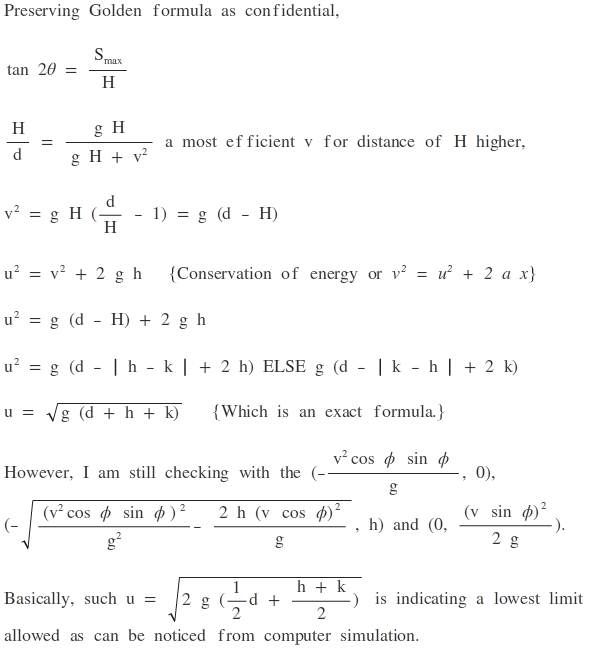Minimum velocity
P and Q are two points a distance d apart at heights h and k above a given horizontal plane. What is the minimum speed V with which a particle can be projected from the horizontal plane so as to pass through P and Q ?
Clarification: the distance d apart is the slanted, point-to-point, separation
This section requires Javascript.
You are seeing this because something didn't load right. We suggest you, (a) try
refreshing the page, (b) enabling javascript if it is disabled on your browser and,
finally, (c)
loading the
non-javascript version of this page
. We're sorry about the hassle.
2 solutions
if d = 0 → h = k so the minimum velocity V = 2 g h and then the first and second choices are V = 4 g h so they're both wrong.
if h = 0 and k = d the minimum velocity is V = 2 g d and the last choice will be V = 3 g h so its wrong that yields that the right choice is the 3rd one.
How would you solve this if it was't a multiple choice question?
Log in to reply
Could you please prove the answer?
Log in to reply
Here you go.
Log in to reply
@Miloje Đukanović – I made mistake by taking g h/ (g h + u^2) as u^2/ (g h + u^2) and got doubted. Anyway, I shall read your proof. Thanks!
